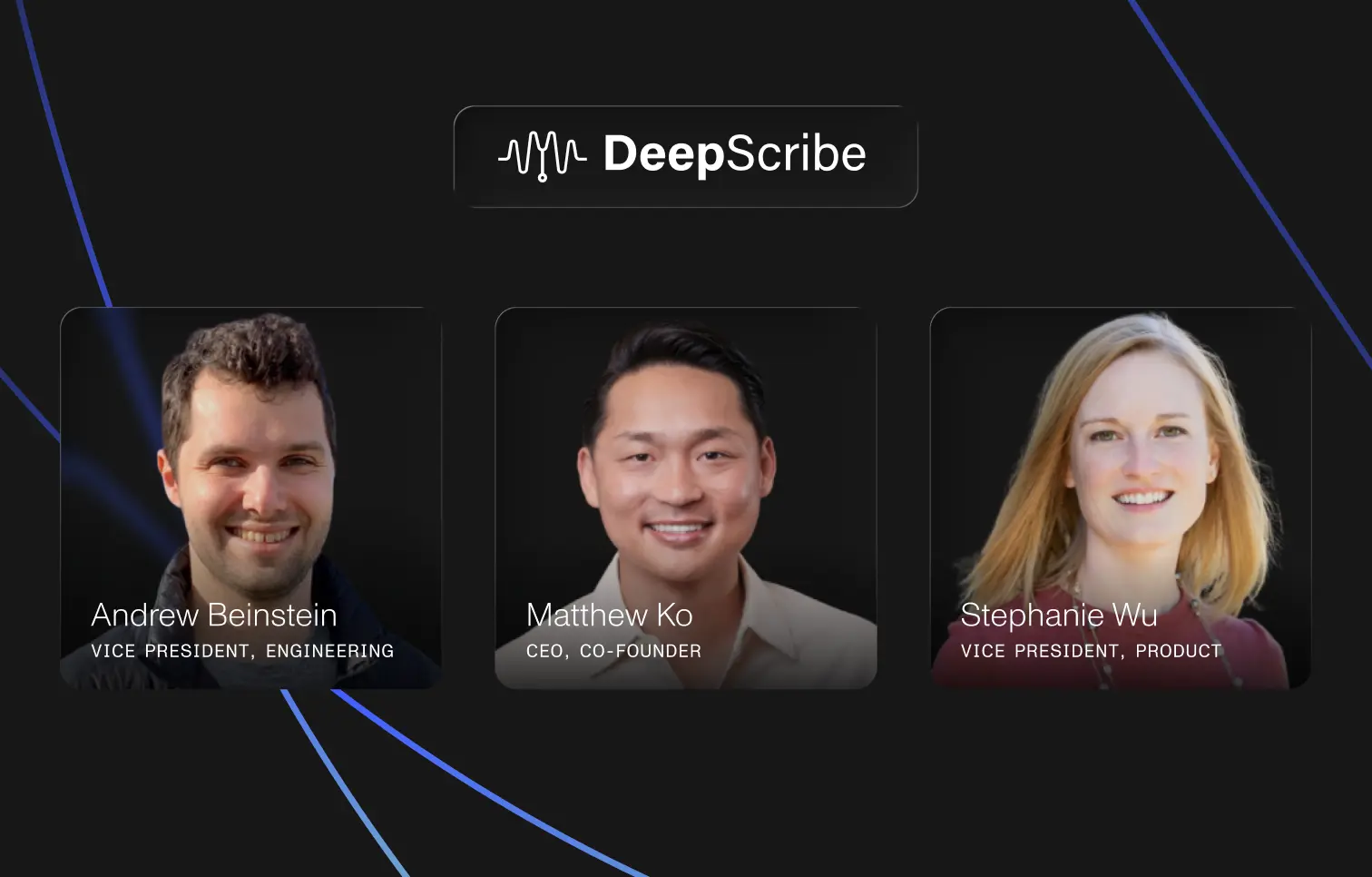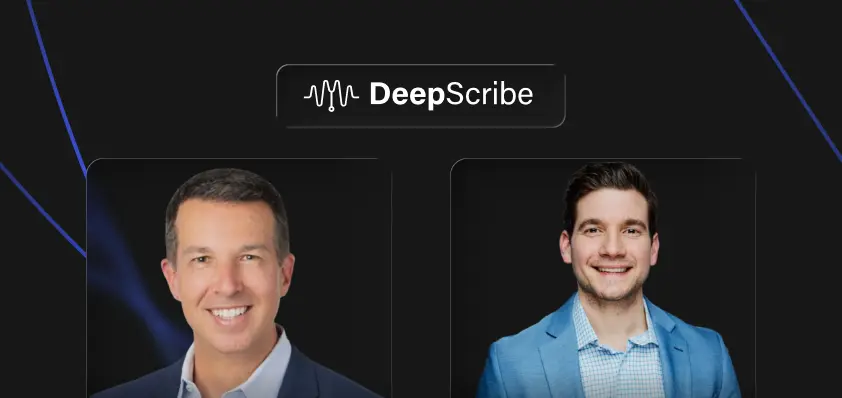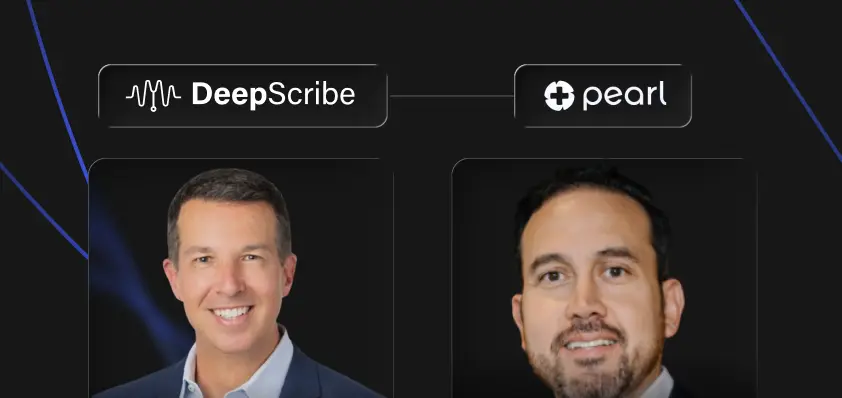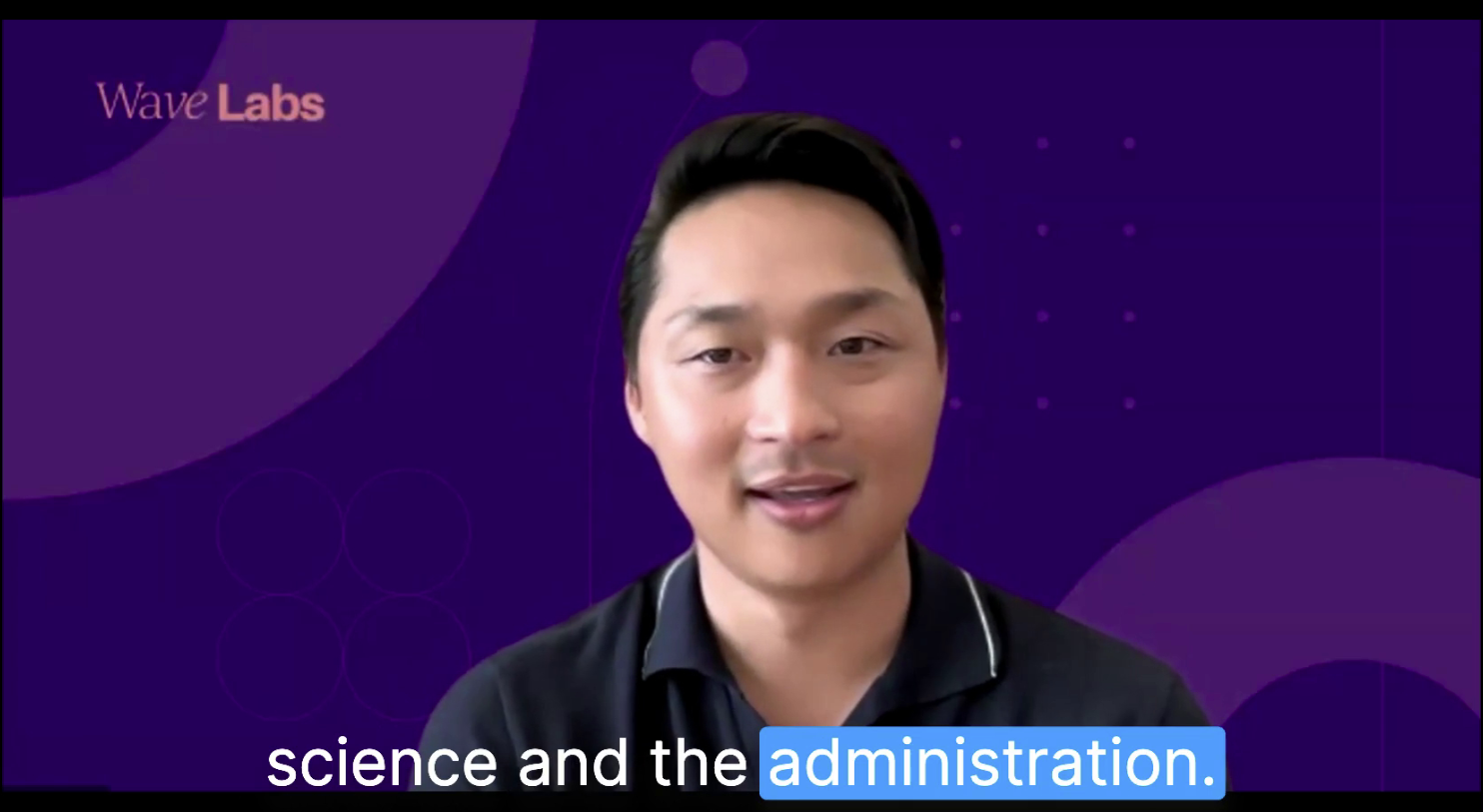An Inside Look at a Technology Leap: DeepScribe Leaders Discuss the New Era of Ambient AI
DeepScribe leaders reveal how advanced AI models now deliver personalized clinical documentation that adapts to each provider's style from the first note.


Just about every article about ambient AI mentions that it has become part of care delivery with lightning-fast speed. How fast? In 2023, just 13% of physicians were using an AI medical scribe, per AMA survey data. Two years later, KLAS Research and Bain reported that 60% of all provider groups are at some stage of using ambient AI for documentation.
This accelerated adoption has two elements moving in parallel: rapid, ongoing technology improvements and growing expectations from clinicians. Today’s healthcare providers want documentation tools that match their style, understand their medical specialty, synthesize and surface patient history, and integrate into their workflow smoothly. Thankfully, the right technology—and its application—can now get that done.
In 2025, DeepScribe responded to both improving technology and clinician needs to create significant changes to our solution. Today’s improved platform redefines personalization, contextual reasoning, and care-team collaboration for ambient AI. The result is note quality that’s currently shaping what an AI scribe can do.
To explore the changes and what clinicians can expect, we spoke with three DeepScribe leaders: Matthew Ko, Founder and CEO; Stephanie Wu, VP of Product; and Andrew Beinstein, Head of Engineering.
What drove DeepScribe to develop such a major change at this moment?
Stephanie:
Two things drove this change. First, LLMs have become much smarter. The way you work with a model at this level is very different. Second, we know that many clinicians expect a product that fits them immediately, and we wanted to build something that works for them.
Matthew:
The biggest impetus was the continuous feedback loop we have with DeepScribe users. We really lean on our clinical advisors and providers to show us where we can improve. With the latest advancements, we realized we could build a custom model for every single one of our users. That opportunity felt like an important inflection point to reimagine how we design our architecture.
How did the DeepScribe team go about building changes of this magnitude?
Andrew:
It all starts with providers. They loved their notes but were asking for more personalization and more context. Once we understood what was needed, we moved fast. We had an intensive development week in San Francisco with a goal to demo the new model by the end of the week. We hit that goal. After the demo, the entire team knew we had something special.
Stephanie:
That demo was with a customer who felt the product wasn’t flexible enough for their needs. We showed them the “new” DeepScribe, and now they’re using it 100% of the time. That gave us the conviction to invest fully in this direction.
Video: Andrew talks about taking the DeepScribe platform further – and why
What immediate impact will clinicians experience now with DeepScribe? What can be unlocked long term?
Stephanie:
Most importantly, these changes mean better notes. Notes are a reflection of the clinician, and we’re able to deliver a higher quality note with very little effort from providers. To personalize a note the way the clinician wants? We’re 80% there right out of the box. The remaining 20% of detailed fine-tuning is now easy. What used to take six weeks now takes about six minutes.
Matthew:
We’re not just customizing notes. We figured out how to design something that works for an individual user. Before, we fit users into profiles. That’s a reductionist approach that put them into molds that didn’t quite fit. With this update, we were able to unshackle ourselves from those limitations.
DeepScribe has always offered customization. What makes personalization different now?
Stephanie:
Doctors are like snowflakes—no two are alike. Even with thousands of permutations in our Customization Studio, there were providers who liked things a little different. Now the sky is the limit.
We no longer have a fixed list of customizations. The AI learns from your past notes, your edits, and it becomes something you can set and forget. As a provider, you can describe to us what you'd like to see in whatever format makes sense to you. Maybe you point to an example of something you like or you just tell us. We take the information you gave us, learn from it, and create a set of custom instructions that we can apply to your notes going forward. It’s really simple.
Andrew:
The inspiration was simple: providers should be able to ask the AI to do something and have it be done immediately. Your first note should already sound like you wrote it, and the product should learn about you more with each visit.
Video: Stephanie talks about the new level of personalization for DeepScribe clinicians.
What does “whole-note” context awareness mean for clinical documentation?
Stephanie:
Let’s start by defining context awareness. It’s really quite simple. A new patient steps into the room and they're in the middle of a long cancer journey. To be helpful to this patient, you have to spend time getting up to speed on all of their details and review their charts. Then you have to connect all the dots to make the best possible care decision.
In a different scenario, let’s say doctor number two sees a patient they’ve been with since the very beginning. They understand the context of this patient’s journey.
Context awareness makes the AI like doctor number two every time. They have been with the patient and understand all the small details. The AI has access to the patient’s chart and all past conversations.
Matthew:
Being able to really understand the patient's history—for example, in oncology, to understand the patient’s different lines of therapy—those details all matter. To figure out how to document in a way that’s a continuation of the care that they've received previously, that’s contextual awareness. It’s really a game changer for specialties where the patient's history is paramount for the visit today.
Andrew:
We had context awareness before, but it was limited to certain sections of the SOAP note. Now, the entire note is contextually aware. Everything from physical exam to assessment to ICD-10 codes is informed by the patient’s past history.
In complex specialties like oncology, it's not enough to just have the note generated from the current visit transcript. What was the entire patient history? What were the labs? Medications? What different providers has the patient seen?
Having all that information helps the AI create a much higher quality note.
How does context sharing help care teams and support their workflows?
Andrew:
Context sharing is all about supporting care teams. Clinicians rarely work alone, so we’re expanding from a single provider relationship to a patient–care team relationship. If you’re an APP writing a note for the managing physician, the note will be generated in the managing physician’s style. If the patient previously saw another APP in the care team, the model pulls that note, too.
Stephanie:
This is the beginning of us investing more heavily in care team collaboration. We have context sharing, shared schedules, and tools that allow teams to standardize formatting across all providers. It gives teams more flexibility and consistency.
—
As expectations rise for what ambient AI should deliver, DeepScribe’s latest platform shows what’s possible when clinician feedback helps drive engineering direction. These advances establish a new level of personalization and contextual intelligence, with documentation that not only meets clinicians’ preferences, but finally feels like an extension of the way they deliver care.
text
| AI Medical Scribe | KLAS score | Specialty support | Documentation intelligence (context, coding, automation) | EHR Support | Customization | Rollout model and enterprise readiness | Best for |
|---|---|---|---|---|---|---|---|
| DeepScribe | 98.8 / 100* | Deep specialty coverage: oncology, cardiology, urology, orthopedics, gastroenterology, + more | Contextual notes (pulls history, labs,, etc.) CPT, ICD-10, HCC coding | Epic, athenahealth, DrChrono, eClinicalWorks, iKnowMed, OncoEMR, UroChart, ModMed, Objective Medical Systems, + more | Deep, per-clinician customization; learns each clinician’s style and supports granular control over templates, structure, and phrasing. | Structured enterprise rollouts with governance, analytics, and at-the-elbow support | Health systems, private practices, and specialists that need customizable, specialty-aware AI for complex workflows |
| Abridge | 95.3 / 100 | Strong in primary care and templated, compliance-driven workflows | Contextual notes (pulls history, labs,, etc.) CPT, ICD-10, HCC coding | Epic (primarily), athenahealth, Cerner | Configurable templates and note sections; orgs define templates, clinicians adjust sections within structured, guideline-aligned notes | Enterprise deployments optimized for Epic workflows | Health systems on Epic, particularly within primary care |
| Commure | 93.3 / 100* | General coverage; specialty outcomes still emerging | CPT, ICD-10 coding | Broad EHR support | Custom templates | On-site enablement and configuration | Health systems that want hands-on rollout support and iterative specialty build-out |
| Suki | 93.2 / 100 | Fast time-to-value in primary care; specialty depth varies | Ambient notes, dictation ICD-10, HCC coding | Epic, athena, Oracle health, Meditech | Multi-mode control (ambient, dictation, commands) | Fast time-to-value; standard enterprise onboarding | Primary care and multi-specialty groups seeking fast time-to-value |
| Microsoft DAX | 92 / 100 | Multi-specialty support; strongest in Epic workflows | ICD-10 coding | Epic (primarily), Centricity | Custom templates | Structured enterprise rollouts; heavy IT involvement | Organizations on Epic |
| Nabla | 90.9 / 100 | Flexible; broad but maturing specialty depth | Ambient notes, agentic automation ICD-10, HCC coding | Epic, athenahealth, eClinicalWorks, NextGen | Custom templates | Lightweight, flexible deployment via web and mobile | Organizations that want flexible, lightweight solution |
| Epic | N/A | Built for Epic-native workflows; specialty depth unknown | Still emerging | Native to Epic | Still emerging | Still emerging | Organizations on Epic |
Related Stories
Realize the full potential of Healthcare AI with DeepScribe
Explore how DeepScribe’s customizable ambient AI platform can help you save time, improve patient care, and maximize revenue.




